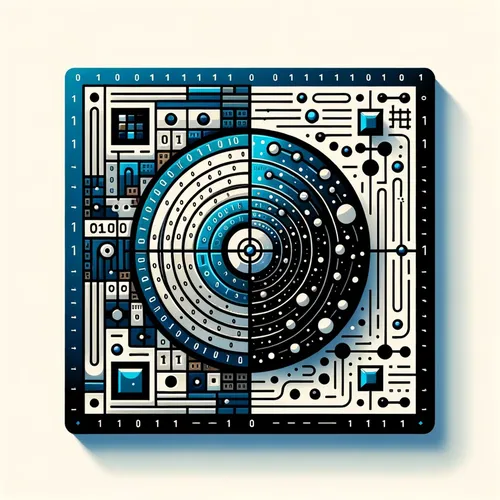Quantum Leap: Modular Chips Unleash Scalable Quantum Computing Era
- Author
- Quiet. Please
- Published
- Mon 01 Sep 2025
- Episode Link
- https://www.spreaker.com/episode/quantum-leap-modular-chips-unleash-scalable-quantum-computing-era--67584022
This is your Quantum Bits: Beginner's Guide podcast.
Midday sun spills through the glass at my office, glittering off the racks of quantum processors—each one humming with potential, vibrating with promise. This is Leo, your Learning Enhanced Operator and quantum computing specialist, welcoming you to Quantum Bits: Beginner’s Guide. Today, we jump right into a development that’s been electrifying the global quantum community over the past several days: a leap in quantum programming that could finally make these alien-sounding machines a bit less inscrutable, and a lot more usable.
Picture this: just days ago, a research team at the University of California, Riverside cracked a critical barrier—how to reliably connect multiple small quantum chips into a larger, fault-tolerant quantum computer, even if the “wires” linking them are far noisier than ideal. Imagine old modem lines woven through a city’s tangled streets, yet still letting you stream ultra-HD video with only an occasional blip. The math gets wilder the deeper you go: the Riverside team demonstrated, in painstaking simulations, that you don’t need to wait for flawless hardware to start building big quantum computers. With error-correcting protocols—the surface code, in this case—chips with high internal fidelity can be strung together by merely “good enough” links, keeping errors at bay and dramatically reducing the path from lab prototype to scalable real machine.
Why is this a truly seismic breakthrough? For years, we’ve faced the “scaling problem”—stacking enough reliable qubits to solve real-world problems, not just toy calculations. Typically, engineers chase ever-purer materials, more elaborate shielding, and monster refrigerators to eke out a few more quiet, entangled qubits on a single chip. But now, we’re seeing a shift—a modular, distributed future, almost like the jump from single-core processors to today’s parallel supercomputers. Mohamed Shalby, lead author on the Riverside study, put it best: “It’s about showing that the chips we already have can be connected… and still work.” The implications ripple out: faster progress using existing technology, accelerated commercial scaling, and—crucially—making quantum programming resemble something familiar to classical computing professionals. Taming quantum chaos with modular, upgradeable “blocks” transforms a wizard’s art into engineering.
And as I say this, echoes of current events swirl. Across the globe, this same modularity logic pushed Oak Ridge National Lab to unveil a new software stack for hybrid quantum–supercomputing systems, while IBM and AMD just announced a partnership to design “quantum-centric” supercomputers able to leapfrog classical limits. Meanwhile, Japan’s all-domestic superconducting quantum system debuted to fanfare in Osaka, run entirely by home-grown tools—proof that quantum programming is becoming more democratized and accessible every month.
Standing at the intersection of these stories, it’s hard not to see the quantum world reflected in our own—where imperfect, noisy connections can, through clever design, become not a bug but a feature. In an age of global challenges, the quantum lesson rings clear: progress comes not only from perfection, but from learning to knit together what is already within our reach.
Thank you for listening to Quantum Bits: Beginner’s Guide. If you have questions or want a topic discussed on air, just email me at [email protected]. Don’t forget to subscribe, and remember—this has been a Quiet Please Production. For more, check out quietplease.ai.
For more http://www.quietplease.ai
Get the best deals https://amzn.to/3ODvOta
